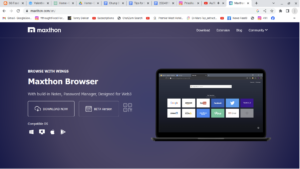SuperCard X Malware Threat
SuperCard X is a new malware-as-a-service platform targeting Android phones through NFC relay attacks. Currently active in Italy but could spread globally, it enables hackers to:
- Steal credit card details.
- Use emulated cards for in-store payments and ATM withdrawals
- Make small transactions to avoid triggering fraud alerts
How the attack works:
- Victims receive a phishing message (text/WhatsApp) impersonating their bank
- Scammers claim there’s an issue with the account requiring urgent attention
- Victims are directed to call a fake support number
- Through social engineering, scammers:
- Get victims to “confirm” card numbers and PINS
- Convince victims to remove spending limits
- Persuade victims to install a malicious app called “Reader”
- The Reader app requests NFC permissions to “verify” cards
- When victims tap their cards, the malware steals chip data
- Hackers use another app called “Tapper” to emulate the stolen cards
Protection recommendations:
- Never respond to unexpected bank messages – contact your bank directly
- Be suspicious of any request to download apps outside the Google Play Store
- Ensure Google Play Protect is enabled on your device
- Consider using additional Android antivirus protection
- Stay informed about emerging security threats
Analysis of SuperCard X Malware Threat
Overview of SuperCard X
SuperCard X is a sophisticated malware-as-a-service platform targeting Android devices through NFC relay attacks. Currently documented primarily in Italy, it represents an emerging threat that could potentially spread globally, including to Singapore. The malware exploits social engineering and NFC capabilities to steal credit card information for fraudulent transactions.
Key Dangers
- Financial Theft: Enables direct access to victims’ credit cards and bank accounts through stolen card data.
- Stealth Operations: Conducts small transactions to avoid triggering fraud detection systems.
- Physical-Digital Bridge: Unlike purely digital malware, SuperCard X bridges digital theft with physical transactions at stores and ATMS.
- Social Engineering Sophistication: Uses convincing bank impersonation tactics to manipulate victims.
- Limited Permissions Requirements: Unlike obvious malware that requests excessive permissions, SuperCard X only needs NFC access, making it less suspicious.
Removing the Malware (If Infected)
- Immediate Banking Actions:
- Contact your bank immediately to report a potential compromise
- Block affected cards and request replacements
- Review recent transactions for unauthorized activity
- Device Cleanup:
- Enter Safe Mode on your Android device
- Uninstall the malicious “Reader” app and any suspicious applications
- Run a comprehensive scan using Google Play Protect and/or reputable antivirus software
- Reset app permissions, particularly NFC permissions
- Security Restoration:
- Change passwords for banking and financial accounts
- Enable two-factor authentication where available
- Monitor accounts closely for several weeks following removal
Prevention Measures
- Banking Communication Awareness:
- Verify all communications claiming to be from your bank
- Never call numbers provided in unexpected texts or messages
- Contact your bank through official channels (official app or phone number on your card)
- App Installation Discipline:
- Only download apps from the official Google Play Store
- Be highly suspicious of any request to install apps via direct links
- Check app permissions before installation, and be wary of apps requesting NFC access
- Enhanced Security Settings:
- Keep Google Play Protect enabled
- Install and maintain reputable mobile antivirus software
- Keep your device’s operating system and apps updated
- Consider disabling NFC when not in use
- Financial Best Practices:
- Set up transaction alerts for your accounts
- Regularly monitor account statements
- Maintain reasonable spending limits on cards
- Consider using separate cards for different purposes (online vs in-person)
Potential Impact on Singapore
While SuperCard X has not been documented explicitly in Singapore yet, the country could be an attractive target for several reasons:
- High Smartphone Penetration: Singapore has one of the highest smartphone adoption rates globally.
- Advanced Digital Banking: Widespread use of mobile banking makes social engineering attacks more plausible.
- Contactless Payment Adoption: Singapore’s high adoption of contactless payments creates a larger attack surface for NFC-based malware.
- Financial Hub Status: As a financial centre, successful attacks could yield higher returns for cybercriminals.
Singapore’s established cybersecurity infrastructure provides some protection, including:
- The Cyber Security Agency (CSA) of Singapore’s monitoring and alert systems
- The Singapore Police Force’s Anti-Scam Centre resources
- Banking sector security protocols and fraud detection systems
Singapore residents should follow the prevention measures outlined above and stay alert to advisories from the Cyber Security Agency of Singapore regarding emerging threats.
In-Depth Technical Analysis of SuperCard X Malware
Architecture and Technical Components
SuperCard X operates as a sophisticated malware-as-a-service (Maas) platform with several interconnected components:
- Dual-App Architecture:
- Reader App: The malicious app is installed on the victims’ devices
- Tapper App: The companion app used by attackers to emulate stolen cards
- NFC Data Extraction Mechanism:
- Exploits Android’s Host Card Emulation (HCE) framework
- Captures APDU (Application Protocol Data Unit) commands between the card and the phone
- Records EMV (Europay, Mastercard, and Visa) transaction data, including:
- Card number and expiration date
- Track 1 and Track 2 data
- ICC certificates and authentication data
- Cryptographic keys used in transactions
- Command & Control Infrastructure:
- Uses encrypted communication channels to transmit stolen card data
- Employs domain generation algorithms to evade blocking
- Operates through multiple proxy layers to conceal actual C2 servers
- Card Emulation Technology:
- Implements EMV protocol standards to create perfect digital replicas
- Dynamically generates cryptographic responses to point-of-sale terminals
- Bypasses standard validation checks at payment terminals
Distribution and Operational Methodology
- Distribution Channels:
- Primary: SMS and WhatsApp phishing messages
- Secondary: Compromised websites mimicking banking security portals
- Tertiary: Malvertising campaigns directing to fake banking apps
- Social Engineering Tactics:
- Uses bank-specific terminology and branding to appear legitimate
- Creates urgency through claims of suspicious transactions
- Exploits COVID-related banking restrictions as pretext for “new verification procedures”
- Operators follow detailed scripts to convince victims during phone conversations
- Operational Security:
- Attackers use burner phones for card emulation operations
- Transactions are geographically dispersed to avoid pattern detection
- Withdrawals follow calculated timing patterns to evade fraud monitoring systems
- Money mules are employed for specific geographic withdrawal campaigns
Technical Evasion Capabilities
- Anti-Detection Mechanisms:
- Code obfuscation and encryption of malicious components
- Dynamic loading of malicious modules only when needed
- Self-deletion capabilities after successful data exfiltration
- Minimal permission requirements to avoid suspicion
- Runtime Behaviour:
- Operates with minimal CPU and battery consumption
- Disguises itself as a system process when active
- Uses legitimate system APIS rather than exploits
- Avoids triggering behaviour-based detection systems
- Transaction Security Bypass:
- Exploits timing vulnerabilities in NFC transaction validation
- Utilises replay attacks for specific card types
- Manipulates transaction cryptograms to appear legitimate
- Target banks with known implementation weaknesses in their verification systems
Economic Model and Dark Web Presence
- MMaas Business Structure:
- Base subscription: €1,500-€5,000 per month (approximately)
- Revenue sharing: 10-30% of successful fraud proceeds
- Tiered service levels with different support packages
- Technical support and updates are provided to subscribers
- Dark Web Marketing:
- Promoted on major cybercrime forums with proof-of-concept videos
- Testimonials from “successful” users to build credibility
- Invitation-only access for higher-tier packages
- Regular updates are advertised to maintain a competitive advantage
- Specialized Services:
- Custom targeting of specific banking apps for premium fees
- Regional adaptation services for different market deployments
- “Cashout guides” tailored to different countries’ ATM systems
- Training services for practical social engineering
Technical Forensic Indicators
- Device Artefacts:
- Unusual NFC service activity logs
- Encrypted database files in non-standard locations
- Modified Android keystore entries
- Suspicious VPN or proxy connections following installation
- Network Signatures:
- Encrypted traffic to non-standard ports
- Brief bursts of data transmission following card tapping
- Connections to known malicious infrastructure
- Unusual DNS resolution patterns
- Behavioural Indicators:
- NFC services are activating without user interaction.
- The battery drains when NFC operations should be dormant
- Card reader services are running in the background
- Unexplained network activity when handling payment cards
Analysis of Similar NFC/Card-Stealing Malware Threats & In-Depth Prevention Guide
Similar Financial Malware Threats
1. NGate Malware
Technical Profile:
- Target: Android devices with NFC capabilities
- Primary Vector: Phishing campaigns masquerading as banking communications
- Purpose: Card data theft through NFC exploitation
- Key Similarity: Direct predecessor to SuperCard X with similar NFC relay attack methodology
- Distinguishing Features: Less sophisticated emulation capabilities, primarily focused on data exfiltration
- Geographic Focus: Initially observed in European markets in 2023-2024
2. EventBot
Technical Profile:
- Target: Android banking and cryptocurrency applications
- Primary Vector: Fake applications mimicking legitimate financial tools
- Purpose: Credential theft, SMS interception, 2fa bypass
- Key Similarity: Banking application targeting and sophisticated social engineering
- Distinguishing Features: Focuses on intercepting SMS authentication codes rather than NFC exploitation
- Impact: Documented cases across Europe, North America, and the Asia-Pacific regions
3. TeaBot (Anatsa)
Technical Profile:
- Target: Over 400 banking and financial service applications
- Primary Vector: Dropper apps on Google Play Store and direct APK distribution
- Purpose: Real-time screen capture during banking sessions, credential theft
- Key Similarity: Sophisticated overlay attacks that mimic banking interfaces
- Distinguishing Features: Uses Android Accessibility Services to capture credentials and implements advanced screen recording
- Evolution: Continuously updated to bypass Google Play Protect and other security measures
4. FluBot
Technical Profile:
- Target: Android devices with banking applications
- Primary Vector: SMS messages claiming to be delivery notifications with links to malicious APKS
- Purpose: Overlay attacks, contact list harvesting for propagation
- Key Similarity: Sophisticated social engineering and banking credential theft capabilities
- Distinguishing Features: Self-propagation through SMS messages to contacts
- Geographic Impact: Widespread across Europe, Australia, and parts of Asia
5. SharkBot
Technical Profile:
- Target: Banking applications across multiple regions
- Primary Vector: Droppers disguised as antivirus or security applications
- Purpose: Automated Transfer System (ATS) attacks that automate fund transfers
- Key Similarity: Targets banking applications with sophisticated bypass techniques
- Distinguishing Features: Implements advanced ATS capabilities that can automatically initiate and complete transactions
- Technical Innovation: Uses advanced overlay techniques and accessibility exploits
6. Xenomorph
Technical Profile:
- Target: Banking, cryptocurrency, and financial services applications
- Primary Vector: Google Play Store applications and sideloaded APKS
- Purpose: Credential theft through overlay attacks and SMS interception
- Key Similarity: Banking focus with sophisticated evasion techniques
- Distinguishing Features: Modular architecture with plugins downloaded after initial infection
- Evolution: Recent versions feature significantly enhanced automation capabilities
7. Medusa Banking Trojan
Technical Profile:
- Target: Financial applications and general-purpose credential theft
- Primary Vector: Phishing campaigns and fraudulent applications
- Purpose: Full device takeover with keylogging and screen recording
- Key Similarity: Advanced evasion techniques and social engineering approaches
- Distinguishing Features: Remote access capabilities provide complete device control
- Technical Capability: Multiple persistence mechanisms make it particularly difficult to remove
Comprehensive In-Depth Prevention Guide
1. Device-Level Hardening
System Security
- Enable Verified Boot: Ensure Android’s Verified Boot is active to prevent boot-level compromises.
- Security Patch Management:
- Implement a strict monthly update policy for security patches
- Consider devices only from manufacturers with firm update commitments
- Set automatic updates to install during non-critical hours
- Firmware Protection:
- Verify the bootloader remains locked (check in Developer Options)
- Never root devices used for financial transactions
- Verify boot attestation when available on enterprise devices
Application Security
- Application Sandboxing Enhancement:
- Use Android Work Profile to separate financial apps from general applications
- Consider dedicated devices for sensitive banking operations in high-security contexts
- Runtime Application Self-Protection:
- Use banking apps that implement RASP technologies
- Look for apps that detect rooted/compromised environments
- Permission Auditing:
- Implement a regular (monthly) review of all app permissions
- Revoke unnecessary permissions, particularly for:
- SMS access
- Notification access
- Accessibility Services
- Device Admin
- NFC controls
- Use permission management apps for scheduled audits.
2. Network-Level Protection
Connection Security
- DNS-Level Protection:
- Implement DNS filtering, such asNextdnsS or AdGuard DNS
- Configure private DNS settings to use security-focused DNS providers
- Traffic Analysis:
- Consider using network monitoring tools like Glasswire to detect unusual connections
- Set data usage alerts to identify unexpected background activity
- VPN Considerations:
- Use reputable VPN services with malware filtering capabilities
- Avoid free VPNS, which may themselves be vectors for attack
- Consider dWiFi VPN profiles for financial applications
Wi-Fi Security
- Connection Management:
- Disable automatic connection to unknown networks
- Use “Randomise MAC addresWWWWiFifor all network connections
- ImplWWiFii-Fi timeWiWiWiWiFidisconnect when not in use)
- PWiWiFi-Fi Protocol:
- NWiFWiFWiFifinancial transactions on pWiFWiFiFi
- If necessary, use the “Always-on VPN” feature for public connections
- Consider cellular data only for financial applications
3. Advanced Application Management
Financial App Security
- Dedicated Environment:
- Consider financial apps that offer secure keystores
- Use banking applications that implement certificate pinning
- Select financial services that offer app-level encryption
- Multi-layered Authentication:
- Implement biometric verification for all financial apps
- Use hardware security keys when supported
- Enable app-specific passwords and PIN codes separate from device unlock
- Transaction Verification:
- Enable out-of-band transaction verification (separate device)
- Set transaction amount thresholds requiring additional verification
- Use signed transaction receipts when available
App Store Hygiene
- Installation Discipline:
- Restrict app installations to the Google Play Store only
- Disable “Install Unknown Apps” permission globally
- For necessary exceptions, enable only temporarily and for specific sources
- Developer Verification:
- Check the developer’s story and reputation before installation
- Verify app reviews across multiple platforms (not just the Play Store)
- Research the application security history before installation
- Application Vetting:
- Check hash values of critical applications (available via third-party security tools)
- Verify app signatures against known-good values
- Consider using enterprise app vetting services in business contexts
4. Behavioural Security Practices
Authentication Management
- Password Hygiene:
- Implement unique passwords for each financial service
- Use a reputable password manager with encryption
- Rotate critical passwords quarterly
- Multi-Factor Authentication:
- Use hardware security keys when possible (YubiKey, etc.)
- Prefer authentication apps over SMS-based2faA
- Consider multi-party authorization for high-value transactions
- Recovery Option Security:
- Secure recovery emails with their own strong authentication
- Limit and monitor account recovery options
- Use passphrase-protected recovery methods
Transaction Protocols
- Pre-Transaction Verification:
- Establish verification contacts with your bank for unusual transactions
- Create personal transaction checklists for high-value movements
- Verify recipient details through secondary channels
- Post-Transaction Monitoring:
- Set up real-time transaction notifications
- Establish regular account review schedules (daily for active accounts)
- Document baseline transaction patterns to quickly identify anomalies
5. Advanced Security Configurations
Hardware-Level Security
- Hardware Security Module Integration:
- Use HSM-backed security when available (confident Samsung Knox features)
- Consider devices with dedicated security chips for critical operations
- Enable Trusted Execution Environment features when available
- NFC Management:
- Keep NFC disabled by default, enable only when needed
- Use NFC payment apps with additional verification requirements
- Consider NFC-blocking cases or cards for physical protection
- Physical Security:
- Implement a strong screen lock with timeout settings (30-60 seconds maximum)
- Enable the “Lockdown mode” feature for immediate biometric deactivation
- Configure remote wipe capabilities through device management
Enterprise-Grade Solutions
- Endpoint Detection and Response:
- Deploy mobile EDR solutions that monitor for behavioural anomalies
- Use advanced threat detection with machine learning capabilities
- Implement continuous monitoring rather than scheduled scans
- Containerization:
- Consider work profile or containerized solutions for financial apps
- Use secure folder features (Samsung) or equivalent for financial applications
- Implement data-at-rest encryption for financial information
6. Incident Response Planning
Pre-Compromise Preparation
- Financial Service Contacts:
- Maintain an offline list of financial service fraud departments
- Establish secondary verification protocols with your banks
- Document account freeze procedures for each institution
- Documentation System:
- Maintain records of authorized financial applications
- Document standard transaction patterns and exceptions
- Keep records of device identifiers linked to financial accounts
- Response Kit:
- Prepare secondary authentication methods for account recovery
- Maintain an offline backup of critical financial information
- Document step-by-step lockdown procedures for compromised scenarios
Post-Detection Actions
- Immediate Containment:
- Implement network WiFWiFiWiFiWiFidures (aeroplane mode + discoWiFiWiFiFi)
- Access emergency account freeze mechanisms through secondary devices
- Execute a predetermined communication plan with financial institutions
- Forensic Preservation:
- Create activity logs before remediation attempts
- Document all suspicious activities and timestamps
- Preserve evidence necessary for potential fraud claims
- Recovery Process:
- Execute clean device restoration procedures
- Implement progressive service restoration with verification
- Conduct a post-incident security assessment
Specific Defences Against NFC-Based Malware Like SuperCard X
Technical Countermeasures
- NFC Transaction Monitoring:
- Enable explicit user confirmation for all NFC operations
- Use financial apps that show real-time NFC activity indicators
- Consider NFC monitoring tools that log all connection attempts
- Secure Element Utilisation:
- Prefer devices with hardware Secure Elements for payment operations
- Use payment applications that leverage hardware security rather than software emulation
- Verify secure element implementation in device specifications
- Application Isolation:
- Configure work profiles to separate financial applications
- Use secure folders (Samsung) or equivalent features
- Consider dedicated devices for high-value financial operations
Behavioral Countermeasures
- Physical Card Protection:
- Use RFID/NFC blocking wallets or sleeves for physical cards
- Consider cards with dynamic CVV/security codes when available
- Maintain separate cards for different risk profiles (online vs in-person)
- Transaction Verification:
- Verify all card-present transactions with transaction alerts
- Establish spending pattern baselines for quicker anomaly detection
- Implement dual-control procedures for high-value operations
- Social Engineering Defence:
- Establish verification codes with your financial institutions
- Create personal verification procedures for banking communications
- Implement waiting periods for unusual request types
The evolving landscape of mobile financial malware requires constant vigilance and a multi-layered security approach. By implementing these comprehensive measures, users can significantly reduce their risk exposure to SuperCard X and similar threats targeting mobile financial services.
Prevention Strategies for Singapore
For Individuals
- App Installation Discipline:
- Only download apps from Google Play or the Apple App Store
- Be highly suspicious of apps shared via messaging, SMS, or email links
- Verify app publishers and check reviews before installing
- Permission Awareness:
- Review permissions requested by apps – Be suspicious if a simple app requests extensive access
- Be particularly cautious of Accessibility Service requests
- Regularly audit app permissions on your device
- Banking Security:
- Use separate devices for banking when possible
- Consider using banking-specific security tools
- Enable two-factor authentication for financial accounts
- Verify transactions through separate channels
- Phishing Recognition:
- Check URLs carefully – legitimate Singapore businesses typically use .sg or .com.sg domains.
- Be suspicious of deals that seem unusually generous
- Verify company contacts through official channels
- Be wary of urgency tactics pushing immediate app downloads

For Organizations in Singapore
- Employee Education:
- Conduct Singapore-specific training on mobile threats
- Create awareness about local brands being impersonated
- Establish clear protocols for verifying legitimate apps
- Implement regular security awareness updates
- Technical Controls:
- Deploy Mobile Device Management (MDM) solutions
- Implement Mobile Threat Defense (MTD) tools
- Consider mobile application management policies
- Set up network monitoring for suspicious connections
- Incident Response:
- Develop specific procedures for mobile malware incidents
- Create dedicated channels for reporting suspicious apps/messages
- Partner with Singapore’s Cyber Security Agency (CSA) for threat intelligence
- Maintain contact with SingCERT for the latest threat updates
- Multi-Language Security Communications:
- Given Singapore’s diverse population, provide security alerts in multiple languages
- Ensure security awareness reaches all demographic groups

For Singapore Government and Organizations
- Public Awareness:
- Launch campaigns specifically targeting Craxs Rat and similar threats
- Partner with telecom providers for security messaging
- Leverage Singapore’s ScamShield app to block known phishing URLs
- Regulatory Approach:
- Work with app stores to expedite the removal of fake apps
- Coordinate with banks to enhance mobile banking security
- Collaborate with INTERPOL and regional partners on cross-border investigations
- Technical Countermeasures:
- Share Craxs Rat indicators of compromise (IoCs) with local organizations
- Block known C2 domains at national internet gateways
- Provide analysis tools to help identify infected devices
- Industry Coordination:
- Facilitate information sharing between affected businesses
- Coordinate response through the Singapore Financial Services Information Sharing and Analysis Center (FS-ISAC)
- Develop early warning systems for new phishing campaigns
The continued evolution of Craxs Rat (with v7.5 just released in April 2024) suggests this threat will remain active in Singapore. A comprehensive approach involving individuals, organizations, and government entities offers the best protection against this sophisticated mobile threat.
Infostealer Malware
Infostealer malware has emerged as one of the most significant cybersecurity threats in recent times, casting a wide net over unsuspecting users. This type of malware comes in various forms, each with its distinct name and functionality. Alarmingly, some of these malicious tools are available as subscription-based services, allowing cybercriminals to pay monthly fees for access—much like a Netflix subscription.
The economy surrounding infostealer malware is thriving. A recent report from Kaspersky revealed that a staggering 25 million users were targeted between the beginning of 2023 and the end of 2024. This surge highlights the growing sophistication and prevalence of these attacks.

Infostealers are particularly insidious, explicitly designed to capture valuable personal information. They can extract bank card details, login credentials, and even sensitive media files, leaving victims vulnerable to financial loss and identity theft.
As this threat continues to evolve, it becomes increasingly crucial for individuals to stay informed and vigilant. Protect yourself by signing up for resources like Kurt’s The CyberGuy Report, which offers security alerts and expert tech tips tailored to keep you safe in the digital world. Awareness is your first line of defence against these lurking dangers.
A newly published report from Kaspersky Digital Footprint Intelligence paints a grim picture of the cybersecurity landscape for 2023 and 2024. Alarmingly, nearly 26 million devices fell victim to infostealer malware during this period. Among the casualties, more than 2 million unique bank card details were leaked, underscoring the extensive reach of cyber criminals.
Perhaps the most shocking revelation is that one in every 14 infections resulted in stolen bank card data. The implications of such breaches extend beyond mere financial loss; passwords, second-factor authentication cookies, and other sensitive credentials were also compromised, leaving users vulnerable to further attacks.
Kaspersky analysts highlighted a significant uptick in infections in 2024, primarily driven by specific strains of malware. RisePro, which accounted for only 1.4% of infections in 2023, skyrocketed to an alarming 22.45% in 2024. Meanwhile, Stealc—a newer threat first identified in 2023—also gained momentum, increasing its share from 2.65% to 13.33%.
Despite the emergence of these new threats, Redline maintained its notorious status as the most widespread infostealer, responsible for a staggering 34.36% of all infections. As the digital landscape evolves, the need for robust cybersecurity measures has never been more critical.

By August 2024, researchers unveiled a staggering statistic: an estimated 15.9 million devices had fallen victim to infostealer malware throughout the previous year. This alarming trend painted a bleak picture of the cybersecurity landscape, indicating that malicious actors were becoming increasingly sophisticated.
However, as the calendar turned to March 2025, the situation worsened. The number of infected devices surged to 16.49 million, surpassing earlier predictions by a striking 3.69%. This unexpected rise left many experts scrambling to reassess their forecasts and strategies.
Adding to the concern, new log files from 2023 continued to emerge on dark web platforms. This influx of data hinted at the possibility that the actual number of infections could be even higher than initially believed.
As researchers delved deeper, they found that over 9 million infections had already been tracked for 2024 alone. With this figure still climbing, it became clear that the final tally for the year would likely exceed the previous year’s numbers, though not by a substantial margin.

The relentless spread of info stealer malware served as a stark reminder of the ongoing battle between cybercriminals and those dedicated to safeguarding digital spaces.
In today’s digital landscape, where infostealer malware infections are surging at an alarming rate and cybercriminals are becoming increasingly cunning, it is more important than ever to take steps to safeguard your sensitive data. The threat to your bank cards and passwords is very real, but there are several effective strategies you can adopt to fortify your defences. Here are six thoughtful approaches that can help you protect your financial information.
First and foremost, investing in robust antivirus software is a fundamental step. Picture this: you install a powerful antivirus program on all of your devices, ensuring they are shielded from the ever-evolving threats lurking online. It’s not just about installation; keeping the software updated regularly is essential. This vigilant protector scans for potential threats, identifying and eliminating them before they can wreak havoc on your system. Imagine the peace of mind that comes with knowing your devices are equipped to combat malicious links that might attempt to infiltrate your private information. Furthermore, a good antivirus solution will alert you to phishing attempts and ransomware threats, acting as a digital guardian for your data and assets. If you’re curious about which antivirus software stands out in 2025, I have some recommendations that cater to Windows, Mac, Android, and iOS platforms.
Next, consider the innovative option of using virtual cards for online transactions. Instead of exposing your actual bank card details, you can generate temporary virtual cards through your bank or services like Privacy.com. These disposable cards serve as a protective layer, minimising the risk of your information being compromised in the event of a data breach. This simple yet effective strategy can significantly limit the fallout from any security incidents.

Additionally, it is crucial to take charge of your finances. By enabling transaction alerts and setting daily spending limits on your cards, you place yourself in a proactive position. Imagine receiving instant notifications for every transaction made with your card; this immediacy allows you to detect unauthorised activities right away. With daily spending limits in place, you can further control your finances and mitigate potential losses.
By embracing these measures and incorporating them into your daily routine, you can create a formidable barrier against the threats posed by infostealer malware and cybercriminals. Your sensitive information deserves protection, and with these strategies at your disposal, you can navigate the digital world with confidence and security.
Navigating the Digital Landscape: A Cautionary Tale
In the vast expanse of the digital world, where convenience often dances hand-in-hand with risk, a wise traveller must tread carefully. One of the most perilous missteps is the act of storing card information within web browsers. With a cunning nature, info stealers lay in wait, targeting the autofill data that resides in popular browsers like Chrome, Edge, and Firefox. Imagine a pop-up appearing before you, innocuously asking if you’d like to save your payment information. It may seem harmless, but resist the temptation! Instead, opt for the safety of a robust password manager. Moreover, consider fortifying your defences with supplementary security measures such as two-factor authentication. As technology evolves, innovative methods like Face ID and Touch ID are beginning to supplant traditional passwords, offering a new layer of protection for sensitive financial details.
As our digital journey continues, we encounter another pivotal aspect: passwords. The importance of maintaining strong passwords cannot be overstated. While adhering to all recommended password practices might not guarantee immunity from cyber breaches, it certainly helps bolster your defences. Since the exact desires of thieves remain shrouded in mystery, employing strong, frequently updated passwords is a prudent strategy. To simplify this task, I wholeheartedly recommend utilising a password manager—an invaluable tool that can generate and securely store complex passwords for you. For those seeking guidance on the best password managers available in 2025, further insights await.
Yet, the quest for security does not end there. Another layer of protection can be found in personal data removal services. While no service can promise to erase every trace of your existence from the internet, engaging with such a service offers a proactive approach to monitoring and managing your online footprint. These services can automate the often tedious process of eliminating your information from numerous websites over extended periods. If you’re curious about which data removal services stand out in this ever-evolving landscape, my curated recommendations are just a click away.
As we navigate this complex digital terrain, it’s crucial to remain vigilant against the threats posed by info stealers—malicious actors lurking in the shadows of our online lives. These threats are alarmingly prevalent, often masquerading as trustworthy applications or employing clever social engineering tactics to ensnare even the most discerning users. No one is entirely immune; even the most cautious among us can find ourselves ensnared by a meticulously crafted scheme.
Thus, the key to safeguarding oneself lies in exercising vigilance while exploring the web, downloading applications, or conducting financial transactions online. By leveraging tools like password managers and reliable antivirus software, we not only enhance our security but also streamline our digital experiences. In this grand narrative of our online existence, let us choose to be proactive heroes rather than unwitting victims, armed with knowledge and ready to face whatever challenges may arise in the realm of cyberspace.
In this age of digital connectivity, where our lives are interwoven with countless online accounts, many ponder a question: Have you embraced the convenience of a password manager, or do you find yourself still relying on the fragile faculties of memory or perhaps jotting down your passwords on scraps of paper?
Imagine a character in this narrative—let’s call her Clara. Each day, as she navigates the vast expanse of the internet, she faces the daunting task of keeping track of a multitude of passwords. With each new account she creates, a flicker of anxiety dances in her mind. Will she remember this one? Should she trust her memory, which can sometimes feel like a sieve? Or should she resort to scribbling those precious strings of characters on a notepad, leaving them vulnerable to prying eyes?
Clara often finds herself at a crossroads, contemplating the merits of modern solutions versus the age-old methods of recall and notation. In her heart, she knows there must be a better way—one that could alleviate the burden of remembering complex combinations and safeguard her online identity. Yet, as she sits at her computer, fingers poised over the keyboard, she wonders: Is it time to leap into the world of password managers, or will she continue to tread the familiar path of memorisation and note-taking?

Thus unfolds her journey—a tale not just about passwords but also about the choices we make in our digital landscape.
Secure browsing
When it comes to staying safe online, using a secure and private browser is crucial. Such a browser can help protect your personal information and keep you safe from cyber threats. One option that offers these features is the Maxthon Browser, which is available for free. It comes with built-in Adblock and anti-tracking software to enhance your browsing privacy.

Maxthon Browser is dedicated to providing a secure and private browsing experience for its users. With a strong focus on privacy and security, Maxthon employs strict measures to safeguard user data and online activities from potential threats. The browser utilises advanced encryption protocols to ensure that user information remains protected during internet sessions.
In addition, Maxthon implements features such as ad blockers, anti-tracking tools, and incognito mode to enhance users’ privacy. By blocking unwanted ads and preventing tracking, the browser helps maintain a secure environment for online activities. Furthermore, incognito mode enables users to browse the web without leaving any trace of their history or activity on the device.
Maxthon’s commitment to prioritising the privacy and security of its users is exemplified through regular updates and security enhancements. These updates are designed to address emerging vulnerabilities and ensure that the browser maintains its reputation as a safe and reliable option for those seeking a private browsing experience. Overall, Maxthon Browser offers a comprehensive set of tools and features aimed at delivering a secure and private browsing experience.
Maxthon Browser, a free web browser, offers users a secure and private browsing experience with its built-in Adblock and anti-tracking software. These features help to protect users from intrusive ads and prevent websites from tracking their online activities. The browser’s Adblock functionality blocks annoying pop-ups and banners, allowing for an uninterrupted browsing session. Additionally, the anti-tracking software safeguards user privacy by preventing websites from collecting personal data without consent.
By utilising the Maxthon Browser, users can browse the internet confidently, knowing that their online activities are shielded from prying eyes. The integrated security features alleviate concerns about potential privacy breaches and ensure a safer browsing environment. Furthermore, the browser’s user-friendly interface makes it easy for individuals to customise their privacy settings according to their preferences.
Maxthon Browser not only delivers a seamless browsing experience but also prioritises the privacy and security of its users through its efficient ad-blocking and anti-tracking capabilities. With these protective measures in place, users can enjoy the internet while feeling reassured about their online privacy.
In addition, the desktop version of Maxthon Browser works seamlessly with their VPN, providing an extra layer of security. By using this browser, you can minimise the risk of encountering online threats and enjoy a safer internet experience. With its combination of security features, Maxthon Browser aims to provide users with peace of mind while they browse.
Maxthon Browser stands out as a reliable choice for users who prioritise privacy and security. With its robust encryption measures and extensive privacy settings, it offers a secure browsing experience that gives users peace of mind. The browser’s commitment to protecting user data and preventing unauthorised access sets it apart in the competitive web browser market.

